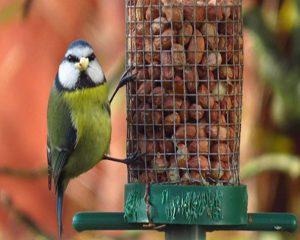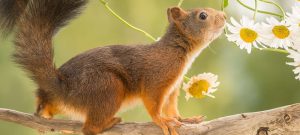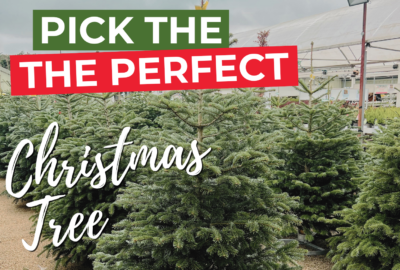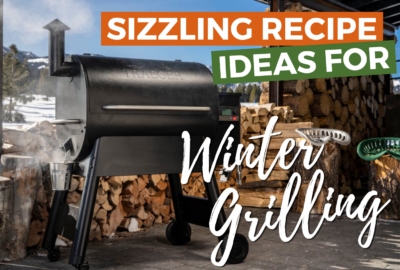Blog
TOP 5 TIPS FOR KEEPING WILDLIFE HAPPY & HEALTHY IN THE COLD WEATHER
As winter starts to loom, many of us don’t like the cold, windy and wet conditions. However, what about all of the animals who have to live in those conditions day in and day out? Their living conditions become very uncomfortable and keeping alive becomes a huge struggle. With temperatures plummeting over the winter months, little creatures and animals will struggle to stay warm and bigger animals will have a struggle to find enough food and nutrients to keep themselves alive. Drinking water becomes frozen, grasses and plants start to die off whilst other food sources become even harder to come by or freeze into blocks of ice and buried under blankets of snow.
The winter months are a very bleak time for wildlife and animals in general and just like us humans, animals have to adapt to the colder conditions, a factor we can definitely help to make their cause easier. Here at Polhill Garden Centre we offer many products as well as expertise which can help you cater for the needs of wildlife in and around your garden area. With the implementation of simple techniques you could help make a real difference.
PROVIDE A FRESH AND CLEAN SOURCE OF WATER
Although during the colder months it becomes extremely wet, windy and cold animals still have to consume high levels of water as if it was still a scorching summer. This is an overriding factor towards their health. With ice being a prominent element over the course of the winter, animals may struggle to stay hydrated and keep alive. This is where you can help by putting out fresh and clean drinking water every day. For example, leaving out a bird bowl with fresh water and checking on it daily is an essential aspect as a method of assurance that the water is still in adequate drinking condition and not frozen over. A technique which could help with frozen water is by pouring a boiled kettle over it in order to melt away the layers of ice.
It is recommended checking the water and melting away the ice first thing in the morning to allow the animals to drink. However, it is highly recommended to take a cautious approach with regards to fish ponds. Most fish have a better chance of surviving the colder conditions by hibernating under the surface of ice, so may be best leaving the pond frozen over and putting out an alternative water source for animals to drink.
FEEDING BIRDS AND SQUIRRELS
As mentioned on the Wildlife section of our website, it is paramount to feed birds throughout the course of the year, although winter is the most important time. This is because berries and seeds have either all been eaten or begin to waste away due to all of the rain and damp conditions. Insects and other food sources also become hidden under frozen earth surfaces, making food very hard to come by for birds and squirrels too. Extra energy and nutrients are needed to try and keep warm during cold days and sub-zero nights.
Here at Polhill we have an extensive selection of seed mixtures which are ideal for hungry and deprived birds that will be visiting your garden seeking sources of food. Not only do they provide plenty of nutrients which are beneficial during the colder periods, they are pretty good value for money too. Check here to see our range.
Fat is also an essential part of a bird’s diet in the colder conditions. The most common types are plant-based suet, which can be bought as cakes or in balls in many flavours to attract different species. Another great natural source of fat is nuts – peanuts are a firm favourite of blue tits, robins, and woodpeckers if you are lucky enough to have the latter visit your garden. These can either be scattered on a food tray, or can be placed in wire mesh feeders, which is probably a safer option as it further decreases the likelihood that a bird may choke, allowing them to peck away at the nuts in bite-sized portions and preventing some of the greedier birds from simply cramming their mouths full. Again, these products are all available here at Polhill. If you don’t have a feeder, crush the nuts first, and scatter them across a tray.
For squirrels, it is well documented that nuts are a significant part of their diets and with the high energy and natural fats which are accessible from nuts; squirrels would be kept very healthy and happy.
CONSIDER PLANTING FRUIT TREES AND SHRUBS
This process takes a little more effort but serves two purposes – creates a food source for a wide range of animals and helps to make your garden bright and colourful. This really does make a difference to wildlife as it creates a natural food source which is high in nutrients. The beautiful blossom would help add colour and cheer up your garden during the dreary months whilst also providing energy for pollinating insects and keep other animals well fed and happy with their abundance of fruit.
BEING CAREFUL OF LIGHTING FIRES WHERE WILDLIFE COULD BE
An issue which is often not considered by people during the colder months is that of bonfires and log fires. Although they are great methods to keep warm and get rid of debris, they can be highly dangerous to various animals. Although this is technically an issue all year round it should be considered that dead leaves, piles of logs, twigs and other debris are all attractions to hedgehogs, frogs, mice and other animals as a method of keeping warm and concealed from the cold weather.
Unfortunately, many people do not consider this when constructing a pile for bonfire night or when entertaining guests on a winter’s evening. This results in many animals dying or being sternly wounded. We highly recommend that in order to keep wildlife safe this winter, you ensure to check thoroughly for signs of life before carrying out any bonfires and this can be done by checking through the areas you plan to light your fire.
INSECTS
Most insects ensure their survival throughout the winter through hibernation. However, for the insects that do not go into hibernation they seek sources of pollen and Ivy which is one of the best as it flowers in the colder months. That is why it is imperative that if you have any Ivy in your garden that you do not cut it back during the winter period.
Butterflies and moths overwinter as pupae or caterpillars just below the soil usually at the base of food plants or in long grass. Other types of insects decide to take home in hollow stems so it is recommended to hold off trimming certain plants until the spring months.
For any more information and tips on how to keep wildlife healthy and happy during the winter months, come down to see us at Polhill Garden Centre where our friendly and expert team would be more than happy to help. Alternatively, contact us here.












Leave a reply
You must be logged in to post a comment.